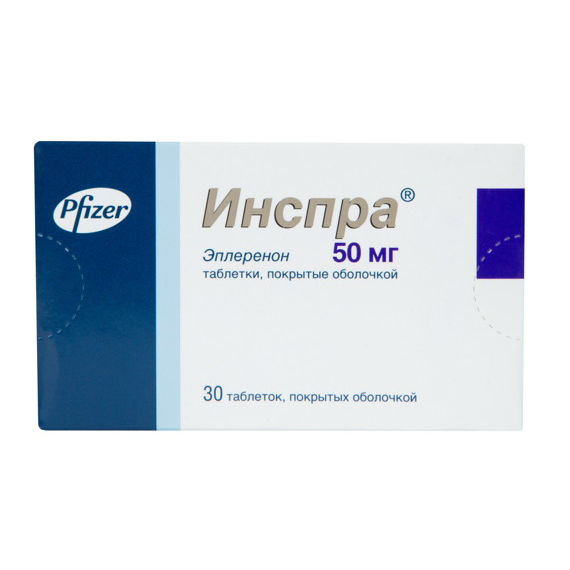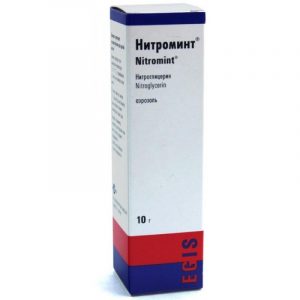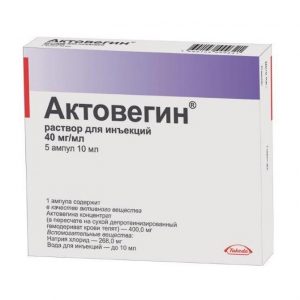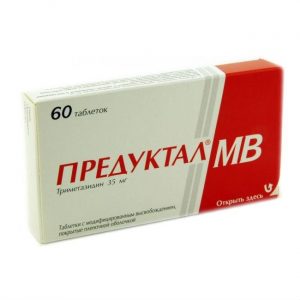Description
packaging 30 pcs
Pharmacological action of
Indomethacin has anti-inflammatory, analgesic and antipyretic effects, as well as some antiplatelet effect. Suppresses the activity of anti-inflammatory factors, reduces platelet aggregation. Inhibiting cyclooxygenase 1 and 2,
Eplerenone causes a persistent increase in plasma renin and serum aldosterone concentrations. Subsequently, renin secretion is suppressed by aldosterone via a feedback mechanism. Moreover, an increase in renin activity or in the concentration of circulating aldosterone does not affect the effects of eplerenone.
Eplerenone efficacy was studied in a double-blind, placebo-controlled study EPHESUS (Eplerenone Postacute myocardial infarction Heart failure Efficacy and Survival Study) in 6632 patients with acute myocardial infarction (MI), left ventricular dysfunction (LV) (ejection fraction (EF)
In the clinical study EMPHASIS-HF (Eplerenone in Mild Patients Hospitalization and Survival Study in Heart Failure), 2737 patients with CHF II functional class (FC) were classified according to NYHA classification (New York Heart Association) and severe systolic dysfunction (the mean LVEF in the study was 26.1%). The average follow-up period was 21 months. In the active treatment group with eplerenone, patients received ACE inhibitors or angiotensin II receptor blockers (94%) before inclusion. blockers (86.6%). Primary end points:. death from cardiovascular causes or hospitalization for heart failure clinical study EMPHASIS-HF showed that the use of eplerenone in an average dose of (39,1 ± 13, 8) mg / day (25-50 mg) in patients with chronic heart failure II FC according to NYHA classification reduces mortality associated with cardiovascular diseases by 37% (p
ECG
In studies on the dynamics of ECG in healthy volunteers, the significant effect of eplerenone on Heart rate, QRS, PR, or QT intervals were not detected
Pharmacokinetics
Absorption and distribution of
Absolute bioavailability of eplerenone is 69% after ingestion of 100 mg of eplerenone in the form of tablets, Tmax is approximately 2 hours, Cmax and AUC are linear in dose range over the range from 10 to 100 mg and n linear -. in a dose of 100 mg equilibrium state is reached within 2 days Food intake does not affect the absorption
Eplerenone approximately 50% bound to plasma proteins, mainly to 1-acid glycoprotein group.. . The calculated Vd in equilibrium is (50 ± 7) l. Eplerenone does not bind to red blood cells.
Metabolism and excretion
Eplerenone metabolism is mainly carried out under the influence of the CYP3A4 isoenzyme. No active plasma eplerenone metabolites have been identified.
Unchanged, less than 5% of the dose of eplerenone is excreted through the kidneys and intestines. After a single oral administration of labeled eplerenone, about 32% of the dose was excreted through the intestines and about 67% through the kidneys. T1 / 2 of eplerenone is about 3-5 hours, clearance from blood plasma is about 10 l / h.
Special groups
Age, gender and race. The pharmacokinetics of eplerenone at a dose of 100 mg once a day was studied in elderly patients (over 65 years old), men and women. The pharmacokinetics of eplerenone did not differ significantly between men and women. In equilibrium, in elderly patients, Cmax and AUC were respectively 22 and 45% higher than in young patients (18 45 years old).
Renal failure. The pharmacokinetics of eplerenone was studied in patients with renal failure of varying severity and in patients on hemodialysis. Compared with patients in the control group, patients with severe renal failure showed an increase in equilibrium AUC and Cmax by 38 and 24%, respectively, and in patients on hemodialysis, they decreased by 26 and 3%. No correlation between plasma eplerenone clearance and creatinine clearance was found. Eplerenone is not removed by hemodialysis.
Hepatic failure. The pharmacokinetics of eplerenone at a dose of 400 mg were compared in patients with moderate hepatic impairment (7 9 points according to the Child-Pugh classification) and healthy volunteers. Equilibrium Cmax and AUC of eplerenone were increased by 3.6 and 42%, respectively. In patients with severe hepatic insufficiency, eplerenone has not been studied, therefore, its use in this group of patients is not shown.
Heart failure. The pharmacokinetics of eplerenone at a dose of 50 mg was studied in patients with heart failure (FC II IV). The equilibrium AUC and Cmax in patients with heart failure were respectively 38 and 30% higher than in healthy volunteers selected by age, body weight and gender. Eplerenone clearance in patients with heart failure is similar to that in healthy elderly people.
Indications
Myocardial infarction – in addition to standard therapy, in order to reduce the risk of cardiovascular mortality and morbidity in patients with stable LV dysfunction (EF 40%) and clinical signs of heart failure after myocardial infarction, chronic heart failure – in addition to standard therapy, in order to reduce the risk of cardiovascular mortality and morbidity in patients with chronic heart failure II FC according to NYHA classification, with LV dysfunction ( In 35%).
Contraindications
hypersensitivity to eplerenone or other components of the
drug clinically significant hyperkalemia
serum potassium at the beginning of treatment more than 5 mmol / l
moderate or severe renal failure (Cl creatine -Pew)
rare hereditary diseases such as lactose intolerance, lactase deficiency and glucose-galactose malabsorption syndrome (see “Special instructions”)
simultaneously taking potassium-sparing diuretics, potassium preparations, or strong CYP3A4 inhibitors, for example, itraconazole, ketoconazole, ritonavir, nelfinavir, clarithromycin, telithromycin, and nefazodone (see Interaction)
plasma creatinine concentration> 2 mg / dl (> 177 mmol / l) in men or> 1.8 mg / dl (> 159 mmol / l) in women
there is no experience with the drug in children under the age of 18, therefore, its administration to patients of this age group Not recommended.
Precautions: type 2 diabetes mellitus and microalbuminuria (see Special Instructions ) old age impaired renal function (creatinine Cl less than 50 ml / min) simultaneous use of eplerenone and ACE inhibitors or angiotensin II receptor antagonists, strong inducers of CYP3A4 isoenzyme, drugs containing lithium, cyclosporine or tacrolimus, digoxin and warfarin in doses close to the maximum therapeutic (see “Special instructions” and “Interaction”). A triple combination of an ACE inhibitor and angiotensin II receptor antagonists with eplerenone should not be used.
Special instructions
Hyperkalemia. When treated with the drug Inspra ®, hyperkalemia may develop, which is due to its mechanism of action. At the beginning of treatment and when changing the dose of the drug in all patients, the concentration of potassium in the blood serum should be monitored. In the future, periodic monitoring of potassium concentration is recommended for patients with an increased risk of developing hyperkalemia, for example, elderly patients with renal failure (see “Dosage and Administration” and diabetes mellitus). Given the increased risk of developing hyperkalemia, the appointment of potassium preparations after the start of treatment with eplerenone is not recommended. Reducing the dose of Inspra ® leads to a decrease in the concentration of potassium in the blood serum. In one study, the addition of hydrochlorothiazide to eplerenone prevented an increase in serum potassium concentration.
Impaired renal function. In patients with impaired renal function, including diabetic microalbuminuria, it is recommended to regularly monitor the concentration of potassium in the blood serum. The risk of developing hyperkalemia increases with decreased kidney function. Although the number of patients with type 2 diabetes mellitus and microalbuminuria in the studies was limited, nevertheless, an increase in the frequency of hyperkalemia was noted in this small sample. In this regard, in such patients, treatment should be carried out with caution. The drug Inspra ® is not removed during hemodialysis. The use of the drug Inspra ® is contraindicated in severe renal failure (see. “Contraindications”).
Impaired liver function. In patients with mild or moderate hepatic impairment (5 ² 6 and 7 ² 9 points according to the Child-Pugh classification), an increase in serum potassium concentration of more than 5.5 mmol / L was not detected. In such patients, electrolyte concentration should be monitored. In patients with severely impaired liver function, eplerenone has not been studied, therefore its use is contraindicated (see. “Contraindications”).
Inductors CYP3A4. The simultaneous use of eplerenone with strong CYP3A4 inducers is not recommended (see “Interaction”).
Cyclosporine, tacrolimus, preparations containing lithium. During treatment with eplerenone, the administration of these agents should be avoided (see ² ÑInteraction ² Ñ).
lactose. Tablets contain lactose, so they should not be prescribed to patients with rare hereditary diseases such as lactose intolerance, lactase deficiency and glucose-galactose malabsorption syndrome.
Influence on the ability to drive vehicles and work with mechanisms. The effects of Inspra ® on the ability to drive vehicles or use equipment have not been studied. However, given the possibility of the drug causing dizziness and fainting, caution should be exercised when driving a vehicle or using equipment while taking the drug Inspra ®.
Composition of
1 tablet contains:
Active ingredient: eplerenone 50 mg
Excipients: lactose monohydrate MCC croscarmellose sodium hypromellose sodium lauryl sulfate talc magnesium stearate
yellow membrane 25, yellowdoll 25: Op , polysorbate 80, iron dye oxide yellow, iron dye oxide red).
Dosage and administration of
Inspra can be prescribed as monotherapy or in combination with other antihypertensive drugs. The recommended initial dose of the drug is 50 mg 1 time per day. If the decrease in blood pressure is insufficient, the dose can be increased to 100 mg once a day.
Side effects
From the hematopoietic system and lymphatic system: infrequently – eosinophilia.
Disorders of metabolism and nutrition: often – hyperkalemia, dehydration, hypercholesterolemia, hypertriglyceridemia infrequently – hyponatremia, hypothyroidism.
Mental disorders: infrequently – insomnia.
Neurological disorders: often – dizziness, fainting infrequently – headache, hypesthesia.
From the side of the heart: often – myocardial infarction infrequently – atrial fibrillation, left ventricular failure, tachycardia.
Vascular disorders: often – a pronounced decrease in blood pressure infrequently – orthostatic hypotension, thrombosis of arteries of the lower extremities.
From the respiratory system, chest and mediastinum: often – cough infrequently – pharyngitis.
From the gastrointestinal tract: often – diarrhea, nausea, constipation infrequently – flatulence, vomiting.
From the liver and biliary tract: infrequently – cholecystitis.
From the skin and subcutaneous fat: often – itchy skin infrequently – increased sweating, rash frequency is unknown – angioedema.
From the musculoskeletal system and connective tissue: often – cramps in the calf muscles of the legs, musculoskeletal pain infrequently – back pain.
From the kidneys and urinary tract: often – impaired renal function.
General and local: infrequently – asthenia, malaise.
Laboratory indicators: infrequently – an increase in the concentration of residual nitrogen of urea, creatinine, a decrease in the expression of the epidermal growth factor receptor, an increase in the concentration of glucose in the blood serum.
Infections: infrequently – pyelonephritis, gynecomastia.
Drug Interactions
Potassium-sparing diuretics and potassium preparations. Given the increased risk of developing hyperkalemia, eplerenone should not be prescribed to patients receiving potassium-sparing diuretics and potassium preparations (see “Contraindications”). Potassium-sparing diuretics can enhance the effects of antihypertensive drugs and other diuretics.
Preparations containing lithium. The interaction of eplerenone with lithium preparations has not been studied. However, in patients receiving lithium preparations in combination with diuretics and ACE inhibitors, cases of increased concentration and intoxication with lithium have been described. If such a combination is necessary, it is advisable to control the concentration of lithium in the blood plasma (see “Special Instructions”).
Cyclosporine, tacrolimus. These drugs can cause impaired renal function and increase the risk of hyperkalemia. The simultaneous use of eplerenone and cyclosporine or tacrolimus should be avoided. If cyclosporine or tacrolimus is required during treatment with eplerenone, it is recommended that you carefully monitor the concentration of potassium in the blood serum and the function of the kidneys (see “Special Instructions”).
NSAIDs. NSAID treatment can lead to acute renal failure due to direct suppression of glomerular filtration, especially in patients at risk (elderly patients and / or patients with dehydration). With the combined use of these funds before and during treatment, it is necessary to ensure an adequate water regime and monitor kidney function.
Trimethoprim. The simultaneous use of trimethoprim with eplerenone increases the risk of hyperkalemia. It is recommended that serum potassium concentration and renal function be monitored, especially in patients with renal failure and elderly patients.
ACE inhibitors and angiotensin II receptor antagonists. When using eplerenone with ACE inhibitors or angiotensin II receptor antagonists, serum potassium concentration should be carefully monitored. Such a combination can lead to an increased risk of hyperkalemia, especially in patients with impaired renal function, including in elderly patients. A triple combination of an ACE inhibitor and angiotensin II receptor antagonists with eplerenone should not be used.
1-blockers (prazosin, alfuzosin). With the simultaneous use of 1-blockers with eplerenone, the hypotensive effect may increase and / or the risk of orthostatic hypotension may increase, and therefore it is recommended to control blood pressure with a change in body position.
Tricyclic antidepressants, antipsychotics, amifostine, baclofen. With the simultaneous use of these agents with eplerenone, the antihypertensive effect may increase or the risk of developing orthostatic hypotension may increase.
corticosteroids, tetracosactide. The simultaneous use of these agents with eplerenone can lead to a weakening of the antihypertensive effect (sodium and fluid retention).
PCF
In vitro studies indicate that eplerenone does not inhibit the isoenzymes CYP1A2, CYP2C19, CYP2C9, CYP2D6 and CYP3A4. Eplerenone is not a substrate or inhibitor of P.
digoxin glycoprotein. AUC of digoxin with simultaneous use with eplerenone increases by 16% (90% CI – 4-30%). Caution must be exercised if digoxin is used in doses close to the maximum therapeutic.
Warfarin. No clinically significant pharmacokinetic interaction with warfarin was detected. Caution must be exercised if warfarin is used in doses close to the maximum therapeutic.
antacids. Based on a pharmacokinetic clinical study, significant interaction of antacids with eplerenone with their simultaneous use is not expected.
Substrates CYP3A4. In special studies, signs of the pharmacokinetic interaction of eplerenone with CYP3A4 substrates, for example, midazolam and cisapride, were not detected.
CYP3A4 Inhibitors
Strong CYP3A4 Inhibitors. When using eplerenone with agents that inhibit CYP3A4, significant PKV is possible. A strong inhibitor of CYP3A4 (ketoconazole at a dose of 200 mg 2 times a day) caused an increase in AUC of eplerenone by 441%. Concomitant use of eplerenone with potent CYP3A4 inhibitors such as ketoconazole, itraconazole, ritonavir, nelfinavir, clarithromycin, telithromycin, and nefazodone are contraindicated (see “Contraindications”).
Mild to moderate inhibitors of CYP3A4. Concomitant use with erythromycin, saquinavir, amiodarone, diltiazem, verapamil and fluconazole was accompanied by significant PCF (the degree of increase in AUC ranged from 98 to 187%). With the simultaneous use of these funds with eplerenone, the dose of the latter should not exceed 25 mg (see “Dosage and administration”).
Inducers CYP3A4
Concomitant use of drugs containing St. John’s wort perforated (St John’s Wort, a strong inducer of CYP3A4 isoenzyme) with eplerenone caused a decrease in AUC of the latter by 30%. When using stronger CYP3A4 inducers, such as rifampicin, a more pronounced decrease in AUC of eplerenone is possible. Given the possible decrease in the effectiveness of eplerenone, simultaneous use of strong CYP3A4 inducers (rifampicin, carbamazepine, phenytoin, phenobarbital, drugs containing St. John’s wort perforated) is not recommended (see. “Special instructions”).
overdose
Symptoms: The most likely manifestations of overdose may be marked decrease in AD and hyperkalemia.
Treatment: if a marked decrease in blood pressure is developed, supportive treatment should be prescribed. In the case of hyperkalemia, standard therapy is indicated. Eplerenone is not removed during hemodialysis. Eplerenone has been found to bind actively to activated carbon.
Storage conditions
At a temperature not exceeding 30 ° C.
Shelf life
3 years
Deystvuyushtee substance
plerenon
Conditions of dispatch from
pharmacies Prescription of pfroaf
Prescription
Dosage PMA
Possible product names
INSPRA 0.05 N30 TABLE A / O srdlkg Ivm. sachet X30
Inspra 50mg No. 30
Test sachet sachet 50mg N30
Test sachet sachet 50mg N30




